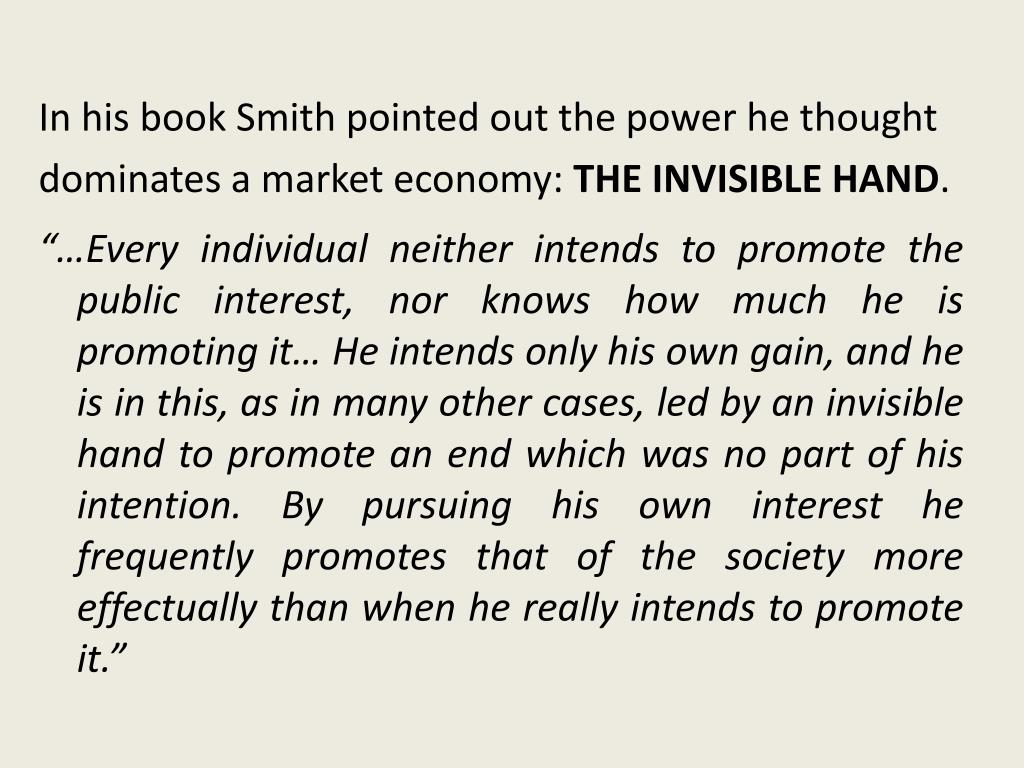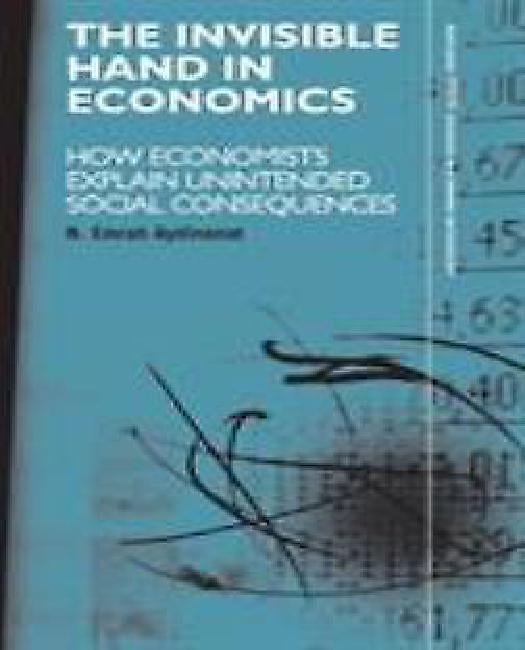

This is an example of invisible hand where the market prices adjust slowly to the new market conditions when a new competitor enters the market.
#INVISIBLE HAND DEFINITION ECONOMICS FOR FREE#
At the same time, he can lower the prices of his merchandise, expecting the demand for his products will be higher than the demand for the products of his competitor. Smiths exposition discloses how his rhetorical sallies could disfigure his economics, confuse his argu- ment for free trade, and make him play fast and loose.

However, he can observe the demand for particular goods and raise the price for them, hoping that the change in price is accurate and enough to generate a higher profit. The Invisible Hand is perhaps the most importantand most controversialmetaphor in economics. John cannot raise the prices because he will lose more customers. In economic terms, the demand for John’s goods has declined as the demand for the products of his competitor has increased, leading to lower profits for John and profit maximization for the competitive store. Adam Smith, (baptized June 5, 1723, Kirkcaldy, Fife, Scotlanddied July 17, 1790, Edinburgh), Scottish social philosopher and political economist, instrumental in the rise of classical liberalism. However, over the past few months, John has noticed that fewer customers are shopping from his store and that the new store realizes a higher profit. During the first months, John was confident that his customers would remain loyal to his business as, before the new competitor entered the market, John was the only sports goods store in the neighborhood. A year ago, another sports goods retailer opened a store three blocks away from John. economics The invisible hand and the invisible elbow by Jeremy Williams Ma9 Comments In his famous metaphor, Adam Smith described the unintended benefits of market behaviour as guided by an ‘invisible hand’. John is a price taker because the market is competitive, and he cannot charge above the current market price. Adam Smith described self-interest and competition in a market economy as the invisible hand that guides the economy. Although Merton worked on the book over the next sixty years, it remained uncompleted when he died in 2003 at age ninety-two.John owns a retail store that sells sporting goods. Merton later developed the flip side of this idea, coining the phrase “the self-fulfilling prophecy.” In a footnote to the 1936 article, he vowed to write a book devoted to the history and analysis of unanticipated consequences. Invisible Hand Economics tutor2u Topics Invisible Hand Adam Smith - one of the founding fathers of modern economics, described how the invisible or hidden hand of the market operated in a competitive market through the pursuit of self-interest to allocate resources in societys best interest. For example, the warnings earlier in this century that population growth would lead to mass starvation helped spur scientific breakthroughs in agricultural productivity that have since made it unlikely that the gloomy prophecy will come true. The Protestant ethic of hard work and asceticism, he wrote, “paradoxically leads to its own decline through the accumulation of wealth and possessions.” His final case was the “self-defeating prediction.” Here he was referring to the instances when the public prediction of a social development proves false precisely because the prediction changes the course of history.

“Basic values” was Merton’s fourth source of unintended consequences. What Is the Invisible Hand in Economics The invisible hand is a metaphor for how, in a free market economy, self-interested individuals can promote the general benefit of society at large.


 0 kommentar(er)
0 kommentar(er)
